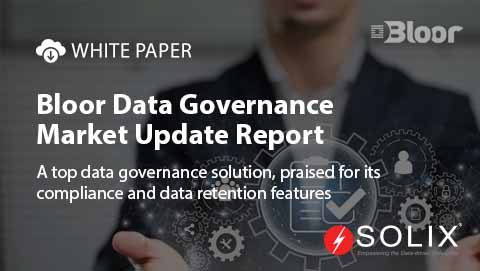Data Integration
What is Data Integration?
Data Integration is the process of combining data from multiple sources into a single, consistent, and accessible format and load into a unified repository. This involves extracting data from various repositories, transforming it to remove inconsistencies and ensure compatibility, and finally loading it into a centralized target system, such as a Data Warehouse, Lake, or Lakehouse.
Key Benefits of Data Integration
Effective data integration has the following benefits:
- Make Informed Decisions
Access to a holistic view of data enables leaders to analyze trends, identify patterns, and predict outcomes more accurately, leading to more confident and data-driven decision-making.
- Optimize Operational Efficiency
Streamlined data access eliminates manual data gathering and integration, allowing teams to focus on higher-value activities and improve productivity.
- Gain Deeper Customer Understanding
By connecting data from all customer touchpoints, organizations can develop a 360-degree view of their customers. This enables personalized marketing campaigns, enhanced customer experiences, and stronger loyalty.
- Reduce Costs
Data integration promotes data governance and eliminates redundancy, minimizing storage requirements, simplifying data management, and ultimately lowering IT infrastructure and maintenance costs.
Approaches to Data Integration
There are many techniques to data integration from source to databases. Here are a few mentioned below:
- Application Integration
Facilitates seamless communication and data exchange between various enterprise applications, ensuring synchronized information exchange across functional boundaries. It is ideal for environments with complex application landscapes requiring real-time data updates.
- Extract, Transform, Load (ETL)
This traditional method extracts data from diverse sources, transforms it into a target system-friendly format, and loads it for analytical consumption. ETL is effective for high-volume batch processing, ensuring data quality and integrity before reaching the target system.
- Extract, Load, Transform (ELT)
A modern twist on data integration, ELT prioritizes speed and flexibility by directly loading data into the target system and then performing transformations within that environment. This approach is suitable for settings with large, unstructured data sets and real-time requirements.
- Real-Time Data Processing
Continuously streams data updates from various sources, enabling immediate analysis and action. Real-time integration is ideal for monitoring dynamic processes and making informed decisions based on ever-evolving data landscapes.
- Data Virtualization
Creates a virtual layer that provides a unified view of enterprise data from different sources, regardless of where the data resides. This method allows users to access and query data on demand without physically moving it between repositories, making it valuable for scenarios where quick access to data is crucial.
Key Use Cases of Data Integration
- Business Intelligence and Analytics
Unified Data Warehouses, Lakes & Lakehouses
Data integration is essential for building robust data warehouses and lakes, consolidating information from disparate sources into a single, accessible repository. This empowers analysts to explore data holistically, uncover hidden trends, and generate actionable insights for informed decision-making across all levels of the organization.
Enhanced Reporting and Dashboards
By integrating data from various departments and systems, organizations can create comprehensive reports and dashboards that provide a real-time snapshot of key performance indicators (KPIs). This enables leaders to track progress, identify areas for improvement, and make data-driven adjustments towards achieving strategic goals.
- Customer Experience Management
360-Degree Customer View
Data integration connects customer data from multiple touchpoints like CRM systems, website interactions, and loyalty programs. This empowers organizations to understand their customers on a deeper level, personalize marketing campaigns, tailor product offerings, and deliver exceptional customer experiences that foster loyalty and brand advocacy.
Predictive Customer Analytics
Integrating data on buying history, demographics, and website behavior allows organizations to leverage predictive analytics. This helps identify potential customers, anticipate their needs, and personalize offerings, fostering higher engagement and boosting conversion rates.
- Operational Efficiency and Optimization
Streamlined Processes and Workflows
Integrating data from operational systems like manufacturing data, inventory levels, and logistics allows for process optimization and automation. This eliminates manual data entry, minimizes errors, and streamlines workflows, leading to increased productivity and cost savings.
Real-Time Monitoring and Decision-Making
Data integration enables real-time monitoring of operational metrics across departments. This empowers managers to identify potential issues like production bottlenecks or equipment failures proactively, take corrective action immediately, and ensure smooth operations.
- Regulatory Compliance and Risk Management
Data Governance and Compliance
Data integration facilitates data governance by ensuring consistency and accuracy across disparate systems. This simplifies compliance with industry regulations and reduces the risk of fines or penalties associated with data breaches.
Fraud Detection and Risk Mitigation
Integration of financial transactions, customer behavior, and risk indicators enables organizations to detect fraudulent activities in real-time. This minimizes financial losses and protects sensitive customer information.
Challenges of Data Integration
- Quality Issues
Ensuring data accuracy, consistency, and completeness across diverse sources can be challenging. Poor data quality can lead to unreliable insights and flawed decision-making.
- Complexity of Integration
Integrating data from multiple sources with different formats and structures requires sophisticated tools and expertise, making the process complex and resource-intensive.
- Scalability Concerns
As data volumes grow, maintaining performance and efficiency in data integration processes can become difficult, requiring robust infrastructure and scalable solutions.
- Security and Privacy Risks
Integrating data from various sources increases the risk of data breaches and unauthorized access. Ensuring data security and compliance with privacy regulations is critical.
- Cost and Resource Allocation
Data integration projects can be expensive and time-consuming, requiring significant investment in technology, skilled personnel, and ongoing maintenance.
By addressing these challenges, organizations can fully realize the benefits of data integration, driving better decision-making, operational efficiency, and customer satisfaction.
FAQs
How can I ensure data quality during integration?
Data quality can be ensured by implementing data-cleansing techniques, standardizing data formats, and monitoring data validation and quality metrics before loading the data into the target system.
How can I improve the security of my data integration processes?
Following techniques can be implemented to improve security during data integration processes:
- Implement data encryption: Protect data at rest and in transit.
- Enforce access controls: Grant access to data based on the principle of least privilege.
- Monitor data activity: Track user access and identify suspicious behavior.
- Regularly update software and security patches: Minimize vulnerabilities.
What are the benefits of cloud-based data integration?
- Scalability and elasticity: Easily scale your data integration solution to meet changing needs.
- Reduced IT infrastructure costs: Eliminate the need for on-premises hardware and software.
- Faster deployment and time to value: Cloud-based solutions are typically quicker to set up and use.
- Simplified maintenance and updates: The cloud provider handles infrastructure management and updates. Make the answers here in paragraphs





